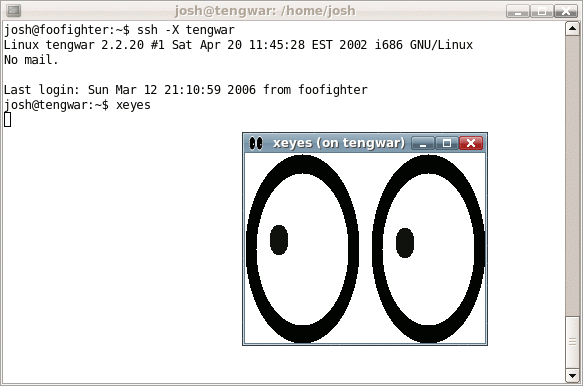|
Tvtwm
tvtwm is an X window manager derived from twm to which it adds the virtual desktop feature from swm. All of these window managers were originally written by Tom LaStrange. The current maintainer of tvtwm is Chris Ross. James Tanis believes he may be the only remaining user of tvtwm, and placed a notice on his web site seeking other users who would like a bug fix release Release may refer to: * Art release, the public distribution of an artistic production, such as a film, album, or song * Legal release, a legal instrument * News release, a communication directed at the news media * Release (ISUP), a code to i ...br> Unlike most more recent virtual window managers, tvtwm models the root window as a single large space, with the physical desktop being a viewport onto that virtual root window. The user can scroll the viewport around the virtual desktop either by pressing certain keys or by clicking into a scaled down representation of the virtual desktop, the so-called panner ... [...More Info...] [...Related Items...] OR: [Wikipedia] [Google] [Baidu] |
X Window Manager
An X window manager is a window manager that runs on top of the X Window System, a windowing system mainly used on Unix-like systems. Unlike MacOS Classic, macOS, and Microsoft Windows platforms (excepting Microsoft Windows explorer.exe shell replacements), which have historically provided a vendor-controlled, fixed set of ways to control how windows and panes display on a screen, and how the user may interact with them, window management for the X Window System was deliberately kept separate from the software providing the graphical display. The user can choose between various third-party window managers, which differ from one another in several ways, including: * customizability of appearance and functionality: ** textual menus used to start programs and/or change options ** docks and other graphical ways to start programs ** multiple desktops and virtual desktops (desktops larger than the physical monitor size), and pagers to switch between them * consumption of memor ... [...More Info...] [...Related Items...] OR: [Wikipedia] [Google] [Baidu] |
Virtual Desktop
In computing, a virtual desktop is a term used with respect to user interfaces, usually within the WIMP (computing), WIMP paradigm, to describe ways in which the virtual space of a computer's desktop environment is expanded beyond the physical limits of the Visual display unit, screen's display area through the use of software. This compensates limits of the desktop area and is helpful in reducing clutter of running Application software, graphical applications. There are two major approaches to expanding the virtual area of the screen. Switchable virtual desktops allow the user to make virtual copies of their desktop view-port and switch between them, with open windows existing on single virtual desktops. Another approach is to expand the size of a single virtual screen beyond the size of the physical viewing device. Typically, scrolling/panning a subsection of the virtual desktop into view is used to navigate an oversized virtual desktop. Overview Switching desktops Swi ... [...More Info...] [...Related Items...] OR: [Wikipedia] [Google] [Baidu] |
Bug Fix
A patch is data that is intended to be used to modify an existing software resource such as a program or a file, often to fix bugs and security vulnerabilities. A patch may be created to improve functionality, usability, or performance. A patch is typically provided by a vendor for updating the software that they provide. A patch may be created manually, but commonly it is created via a tool that compares two versions of the resource and generates data that can be used to transform one to the other. Typically, a patch needs to be applied to the specific version of the resource it is intended to modify, although there are exceptions. Some patching tools can detect the version of the existing resource and apply the appropriate patch, even if it supports multiple versions. As more patches are released, their cumulative size can grow significantly, sometimes exceeding the size of the resource itself. To manage this, the number of supported versions may be limited, or a complete c ... [...More Info...] [...Related Items...] OR: [Wikipedia] [Google] [Baidu] |
Software Release Life Cycle
The software release life cycle is the process of developing, testing, and distributing a software product (e.g., an operating system). It typically consists of several stages, such as pre-alpha, alpha, beta, and release candidate, before the final version, or "gold", is released to the public. Pre-alpha refers to the early stages of development, when the software is still being designed and built. Alpha testing is the first phase of formal testing, during which the software is tested internally using White-box testing, white-box techniques. Beta testing is the next phase, in which the software is tested by a larger group of users, typically outside of the organization that developed it. The beta phase is focused on reducing impacts on users and may include usability testing. After beta testing, the software may go through one or more release candidate phases, in which it is refined and tested further, before the final version is released. Some software, particularly in the int ... [...More Info...] [...Related Items...] OR: [Wikipedia] [Google] [Baidu] |
X11R5
The X Window System (X11, or simply X) is a windowing system for bitmap displays, common on Unix-like operating systems. X originated as part of Project Athena at Massachusetts Institute of Technology (MIT) in 1984. The X protocol has been at version 11 (hence "X11") since September 1987. The X.Org Foundation leads the X project, with the current reference implementation, X.Org Server, available as free and open-source software under the MIT License and similar permissive licenses. Purpose and abilities X is an architecture-independent system for remote graphical user interfaces and input device capabilities. Each person using a networked terminal has the ability to interact with the display with any type of user input device. In its standard distribution it is a complete, albeit simple, display and interface solution which delivers a standard toolkit and protocol stack for building graphical user interfaces on most Unix-like operating systems and OpenVMS, and has b ... [...More Info...] [...Related Items...] OR: [Wikipedia] [Google] [Baidu] |
X11R6
The X Window System (X11, or simply X) is a windowing system for bitmap displays, common on Unix-like operating systems. X originated as part of Project Athena at Massachusetts Institute of Technology (MIT) in 1984. The X protocol has been at version 11 (hence "X11") since September 1987. The X.Org Foundation leads the X project, with the current reference implementation, X.Org Server, available as free and open-source software under the MIT License and similar permissive licenses. Purpose and abilities X is an architecture-independent system for remote graphical user interfaces and input device capabilities. Each person using a networked terminal has the ability to interact with the display with any type of user input device. In its standard distribution it is a complete, albeit simple, display and interface solution which delivers a standard toolkit and protocol stack for building graphical user interfaces on most Unix-like operating systems and OpenVMS, and has been ... [...More Info...] [...Related Items...] OR: [Wikipedia] [Google] [Baidu] |


